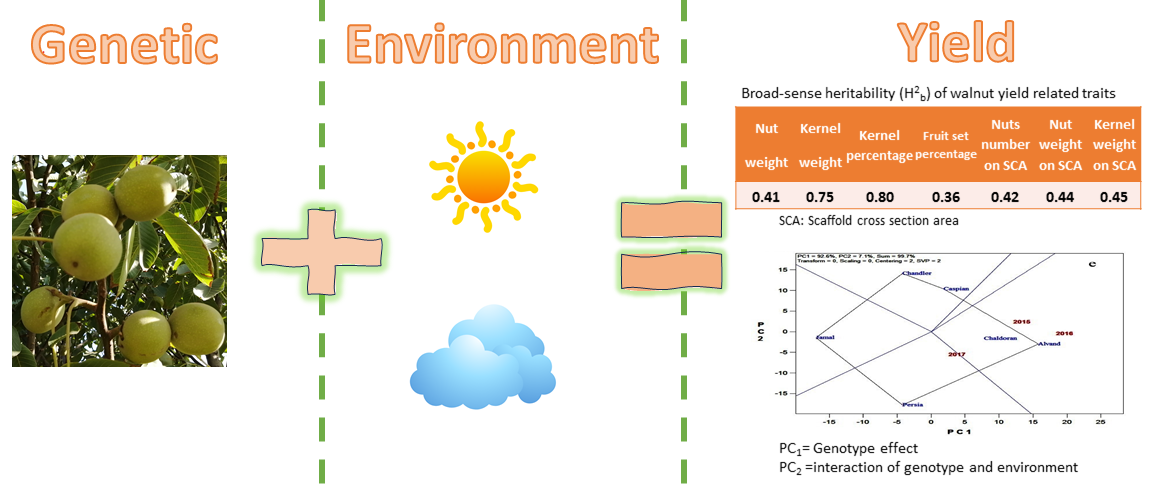Yield related traits in some Persian walnut cultivars: Analysis of genetic and genetic by environment interaction

Published 2024-01-18
Keywords
- Climatic conditions,
- cultivar,
- heritability,
- Juglans regia L.,
- stability
How to Cite
Copyright (c) 2023 Asghar Soleimani, Vali Rabiei, Darab Hassani, Mohammad Reza Mozaffari, Raana Dastjerdi

This work is licensed under a Creative Commons Attribution 4.0 International License.
Abstract
The most important trait in tree species, including walnut, is the yield. In this study, the effect of genotype and their interaction with year on Nut weight, Kernel weight, Kernel percentage, Fruit set, Nuts number on Scaffold (Canopy) Cross Area (SCA), Nut weight on SCA and Kernel weight on SCA were evaluated on Caspian, Persia, Alvand, and Chaldoran walnut cultivars. The results showed that the effects of year, genotype, and year × genotype interaction on all traits were significant. The results showed that Alvand had the highest number of nuts (41.8 per m2) and nut weight (472.1 g/m2) on (SCA). Heritability (H2b) for kernel weight and kernel percentage, were estimated 0.75 and 0.80, respectively. The lowest value of H2b (0.36) was belong to fruit set. The analyses of genetic and phenotypic correlations between traits showed that, the nut weight had (rg = 0.31, rp = 0.27) a moderate correlation with SCA same as kernel weight (rg = 0.34, rp = 0.29). The GGE biplot analysis explained most of the existing variations (>90%). The genetic effect (PC1) for all traits were higher respect to the genetic × environment interaction (PC2), especially for the kernel percentage (94.4%) and number and weight of nut and kernel on SCA (>90%). The lowest value of the PC1 was related to the fruit set (65.6%), which indicates the trait was more affected by genetic × environment interactions (21.8%). So, this result showed that the yield-related traits in walnut is highly relevant to environment(year in this study) and evaluation of the new cultivars needs careful attention in this case.




